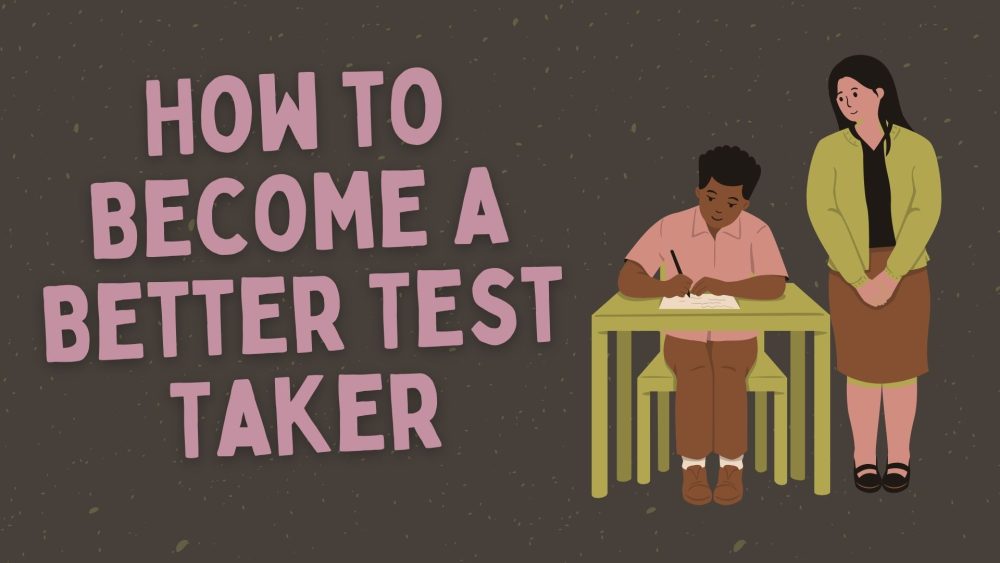How To Write A Peer Review: Helpful Guide

Peer reviews are common assignments in university and college that come with a lot of pressure and anxiety. Writing a peer review can be demanding as it involves lots of research and conceptualizing various facts. That is why most students end up seeking help from ‘pay someone to do my homework’ sites.
However, in this article, we take a break from what you are used to seeing and presenting a whole new guide on writing peer reviews. We seek to provide you with the background information on peer reviews, outline the entire process of preparing and writing a peer review, and give you tips and advice on what a good peer review entails. In the end, you should understand the peer review format and independently write one of your own. Isn’t that exciting?
Let’s hit the road then, my friends.
Table of Contents
What Is A Peer Review?
A peer review refers to assessing the validity, quality, and originality of articles before publication. The end goal of any peer review process is to ensure that authors maintain integrity by sifting out invalid or poor-quality work. In the complex peer-review process, editors go to the extent of filtering for content and directing better quality publications.
It is critical to understand that there are different types of peer review. These include:
- Single anonymized review – Where the names of the reviewers are hidden from the author
- Double anonymized review – Both the author and the reviewer are anonymous
- Triple anonymized review – The reviewers are anonymous, and the author’s identity is unknown to both the editor and the reviewers.
- Open review – Both the author and reviewer are known to each other
I know you might be asking, ‘why all this information yet I only needed to know how to do a peer review?’ Well, my friend, understanding the basics is key to debunking the complex steps that follow. Therefore, once you get a feel of peer review, you will effortlessly know how to peer review.
Now, this next part is crucial,
Peer Review Essay Goals
Every paper you write in school serves a specific purpose. Teachers and professors will always assign students such tasks with a goal in mind which ought to be fulfilled. In this case, the plans of a peer review paper include:
- To help improve quality by highlighting the weaknesses and strengths which the author may not have noticed.
- To improve the editing skills of the students.
As you learn how to peer review a paper, you will notice that different perspectives and valuable feedback comes into the picture. You will also identify that knowing how to conduct a peer review does not come automatically.
Are you ready to become the best peer review writer in your class? Well, below is the peer-reviewing process from top-rated experts who will help you break the ceiling. Belt up as we embark on this critical process.
How To Write A Good Peer Review: Preparation
Imagine wanting to take a trip to the Maldives Islands. Do you wake up one morning and storm the airport by surprise? No, you don’t. The same applies to writing a peer review paper. There is a lot involved before getting into the actual writing process.
However, note that the goal of peer review is not to make you feel superior when reading your classmate’s paper. You should be able to analyze someone else’s paper, and ultimately your own, better.
As you plan to understand how to write peer feedback, here are initial steps to take:
- Check other peer review examples online: This will help you understand the structure, format, and presentation of peer reviews from various students. Having such a broad understanding will help you narrow down to the specific approach you will use.
- Identify the tools you will use: Peer reviewing goes beyond having a pen and a paper at hand. You will need extra tools such as MS Word. When using MS Word, you will go to the ‘Tools’ tab and select ‘Track Changes.’ It will enable you to note down changes directly on the paper.
- Develop an inquisitive mindset: Such a mindset is helpful when breaking down any paper. With it, you will ask difficult questions and identify loopholes in the article. You can only achieve it by reading a lot to become knowledgeable in the area of expertise. Once you know about the topic, the interpretation process becomes a walk-over.
Now that you have the necessary knowledge at this stage, it is time to get into the actual match. The whistle is up already; let’s get the ball rolling.

How To Do A Peer Review Of A Research Paper
The actual peer review process becomes easier when you diligently handle the preparation stage. When writing, there are specific questions you will need to ask to arrive at a top-notch paper. The following is an illustration of how to conduct evaluation and analysis of any written work:
- Scrutinize every paragraph by identifying the essential points
- Identify the central issue in the text (persuasive, explanatory, argumentative, etc.)
- Is there evidence to back up what the author is saying?
- Are the author’s assumptions realistic?
- Do the paragraphs have adequate transitions?
- Are the introductory and concluding paragraphs captivating?
- Can we find an answer to the ‘so what’ question in conclusion?
- Identify the main strengths of the paper.
- Point out the most significant revisions in the paper
Now you are ready to begin writing your peer review with all this information at hand. Nothing will deter you from scoring a First-Class once you get your facts right in the checklist above. Below is an outline that discusses what to say in a peer review:
- Start with a summary of the paper and your general impression: Having gone through the whole research paper, you should be in a position to summarize what it talks about in your first paragraph. It would be wise to outline the strengths and weaknesses of the research project in this section. Since this section contains the most critical information, you should take caution not to provide any misleading details. You can sign off with a recommendation of what you wish the author to do.
- Proceed to discuss the specific areas that need improvement: After summarizing, you now narrow down to the major and minor points identified in the paper. By dividing this into two sections, the major and minor issues, you will have an easy time writing it. Go systematically by capturing every claim while making references to specific pages, sections, or figures. Ensure that your points flow so that others can also be able to respond to them effortlessly.
- You can also state any other points noted in the paper: In some cases, you may have to provide confidential comments to the author regarding the manuscript. In such cases, you will use this last section to point out concerns regarding the paper and what the writer should check into before submitting the form. Examples include language quality and other ethical considerations noted throughout the piece. If you have any potential competing interests, this is the place to state them. It allows you to say whether you will be willing to check a revised version of the paper or not.
If you use a peer review example, you will find this process easier. Remember that the structure is more of an inverted pyramid where you begin with the most important details as you proceed to the least.
Your peer-review letter should discuss what the writer needs to do to qualify for publication. It should not be a toll of nitpicking every piece of the manuscript.
Custom Peer Review Tips For You!
The best peer review sample is one that meets the criteria below:
- It focuses on providing constructive and critical feedback
- It is specific
- It is thorough
- It incorporates respect and professionalism
- It does not recommend additional experiments
- It does not promote the reviewer’s hypotheses or research
- The reviewer should be responsible enough
You will have a unique and reliable peer review that will form the basis of a top-class paper. Having stated some of the pros of the peer review process, you can be sure that it is critical to refine any written work.
Peer Review Example
If you still face challenges, here is a sample peer review that will help you make it to the top. The example highlights all the points we mentioned in this post and is easy to follow. Enjoy reading.
The paper “Rape Culture and Sexual Assault on College Campuses” is devoted to the problem of sexual assaults in the U.S. universities. The author focuses on the topic of the text and claims that the purpose of the paper is to show how common sexual assaults are on college campuses and how universities support the rape culture. However, the thesis statement of the paper is not clear. There is a number of strong statements, which deserve close attention, but only one of them should be chosen. As a result, there are passages that forward the focus of the text in different directions and the general purpose of the paper becomes vague.
The exploration of the author’s S.O.F.T. reveals troubles. The author mentions the causes of the assaults, the attitude of the society to such accidents, the reasons why such cases are usually ignored by the victims, and the reasons of victim blaming. Each of the issues is important and is already raised by other scholars. Because of this diversity, the main idea is unclear. The author insists that universities try to save their reputation and put their needs over the safety and health of the students. However, there is no example of such case throughout the body of the paper. The statement that the relationship between intoxication levels and assaults is overestimated also finds no support by the facts.
The author of the paper argues that universities often have the motive to try and cover up the amount of sexual assaults being committed by giving the reasons of such intention. However, more attention is paid to the exploration of the interrelation between the intoxication levels after drinking alcohol and the assaults. Also, the author investigates the Rape Culture and its features. As a result, the structure of the paper is subordinated to all these aims and may confuse the reader. It is advisable to make some changes in the sequence of arguments and the logic of narration. It would be good to create a flow between the claims of the author and the statistics, in particular.
The author forwards the ideas that are proclaimed in the paper by giving certain examples and by providing statistics. For example, the author appeals to previous investigations of this topic and shows the statistics that support the interrelation between alcohol and sexual assaults. Another move is to provide the real examples in order to support the author’s ideas. The case of Brock Turner is mentioned by the author in order to illustrate the most common social prejudices against the victims. Although the position of the university’s authorities is not described, the example leads the reader to the issue of general social background. It is recommended to provide more direct references to the information which is used in the paper.
Generally, the author succeeded in choosing the topic for the paper. The problem of sexual assaults on college campuses is burning and important. The author showed that there is a wide variety of aspects that need further discussion and investigation. It is clear that the author empathizes with the people who faced with the assault and try to argue with those who blame the victims. It can be seen in the passage devoted to the case of Brock Turner. Moreover, the author appeals to personal experience, which makes the whole paper more competent.
The paper may be improved in some aspects. The main suggestion is to create a clear and specific thesis statement that helps to choose the precise direction for the arguments. After claiming this statement, the author will be able to reorganize the structure of the paper and to make the introduction more focused on one aspect of the problem. It can be the reaction of the universities on the issue, the problem of blaming the victim or the role of the alcohol consumption. Finally, it is necessary to create a clear conclusion that will help to remind the position of the author and will make a call to action, if necessary. After the implementation of the suggestions, the paper will deserve the complete approval.
Need Help With Your Homework?
Do not despair if all these seem tedious for you; you can buy custom essay from our professional writers. Just type ‘solve homework‘, and our helpers will come your way with speed. We are looking forward to your order!
FAQ
What is the format of a peer review?
The peer review format should include assessing the summary, clarifying the review, evaluation, publication ethics and report, and conclusion. However, note that the format to use can vary depending on the publication you are using and the journal guidelines.
How do you write a peer review example?
Write a peer review example summarizing the reviewed work, highlighting the strengths and weaknesses, and suggesting the best way to improve. The peer review example should be written objectively and constructively.
What should a peer review include?
A properly written peer review should include the following:
- Overview
- Contribution
- Strength and weakness
- Acceptability
- Manuscript Contribution
- Major and minor revisions




















